The FT 300 list
Roula Khalaf, Editor of the FT, selects her favourite stories in this weekly newsletter.
This third edition of the Financial Times 300 has assessed US registered investment advisers (RIAs) on desirable traits for investors.
To ensure a list of established companies with deep, institutional expertise, we examine the database of RIAs registered with the US Securities and Exchange Commission and select those that reported to the SEC that they had $300m or more in assets under management (AUM). The Financial Times’ methodology is quantifiable and objective. The RIAs had no subjective input.
The FT invited qualifying RIA companies — more than 1,500 — to complete a lengthy application that gave us more information about them. We added to this with our own research into their practices, including data from regulatory filings. Some 520 RIA companies applied and 300 made the final list.
The formula the FT uses to grade advisers is based on six broad factors and calculates a numeric score for each adviser. Areas of consideration include adviser AUM, asset growth, the company’s age, industry certifications of key employees, SEC compliance record, and online accessibility. The reasons these were chosen are as follows:
• AUM signals experience managing money and client trust.
• AUM growth rate can be a proxy for performance, as well as for asset retention and the ability to generate new business. We assessed companies on both one-year and two-year growth rates.
• Companies’ years in existence indicates reliability and experience of managing assets through different market environments.
• Compliance record provides evidence of past client disputes; a string of complaints can signal potential problems.
• Industry certifications (CFA, CFP, etc) shows the company’s staff has technical and industry knowledge, and signals a professional commitment to investment skills.
• Online accessibility demonstrates a desire to provide easy access and transparent contact information.
Assets under management and asset growth, combined, comprised roughly 80 to 85 per cent of each adviser’s score.
Additionally, the FT caps the number of companies from any one state. The cap is roughly based on the distribution of millionaires across the US.
We present the FT 300 as an elite group, not a competitive ranking of one to 300. This is the fairest way to identify the industry’s elite advisers while accounting for the firms’ different approaches and different specialisations.
The research was conducted on behalf of the Financial Times by Ignites Distribution Research, a Financial Times sister publication.
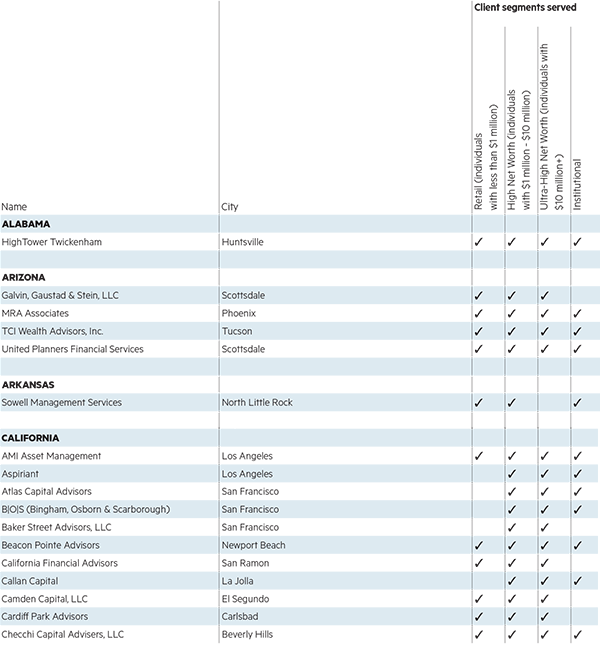
. . . . . . . . . . . . . . . . . . . . . . . . . . . . . . . . . . . . . . . . . . . . . . . .
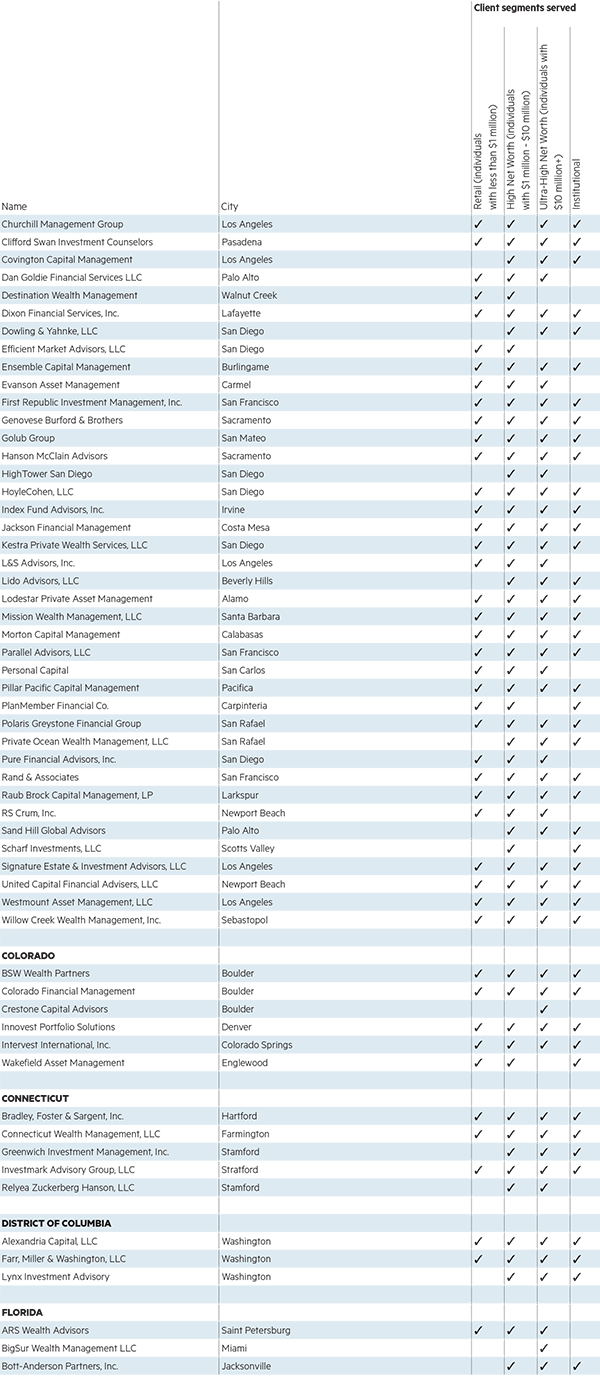
. . . . . . . . . . . . . . . . . . . . . . . . . . . . . . . . . . . . . . . . . . . . . . . .

. . . . . . . . . . . . . . . . . . . . . . . . . . . . . . . . . . . . . . . . . . . . . . . .
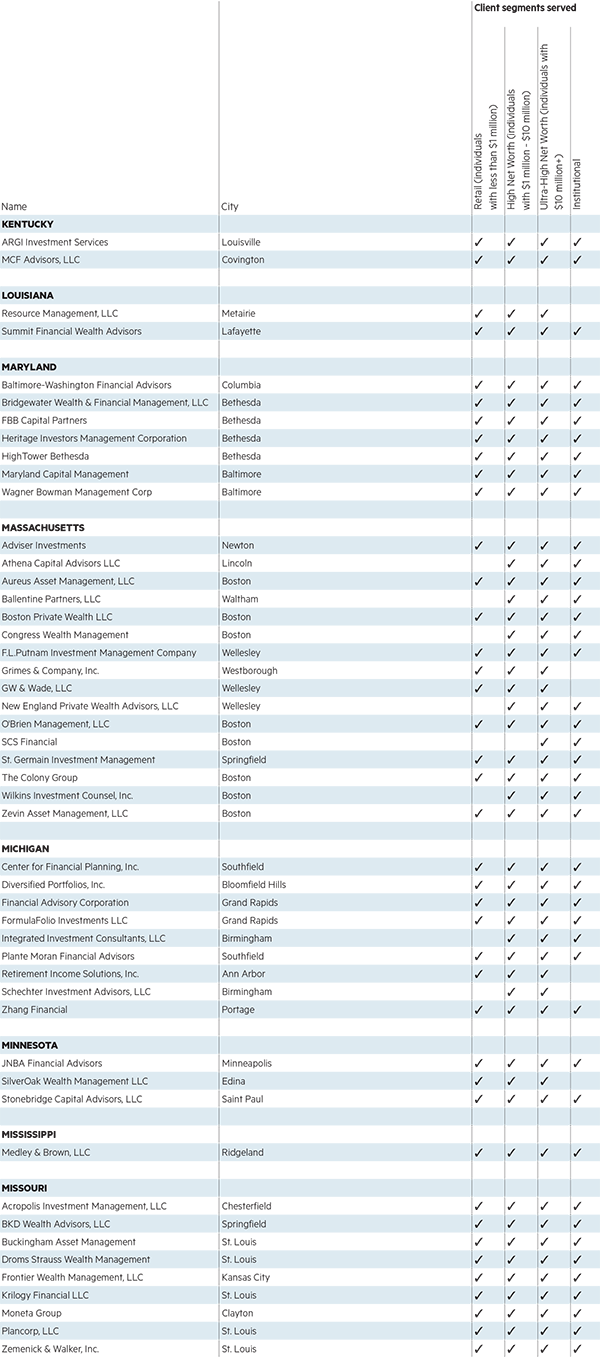
. . . . . . . . . . . . . . . . . . . . . . . . . . . . . . . . . . . . . . . . . . . . . . . .
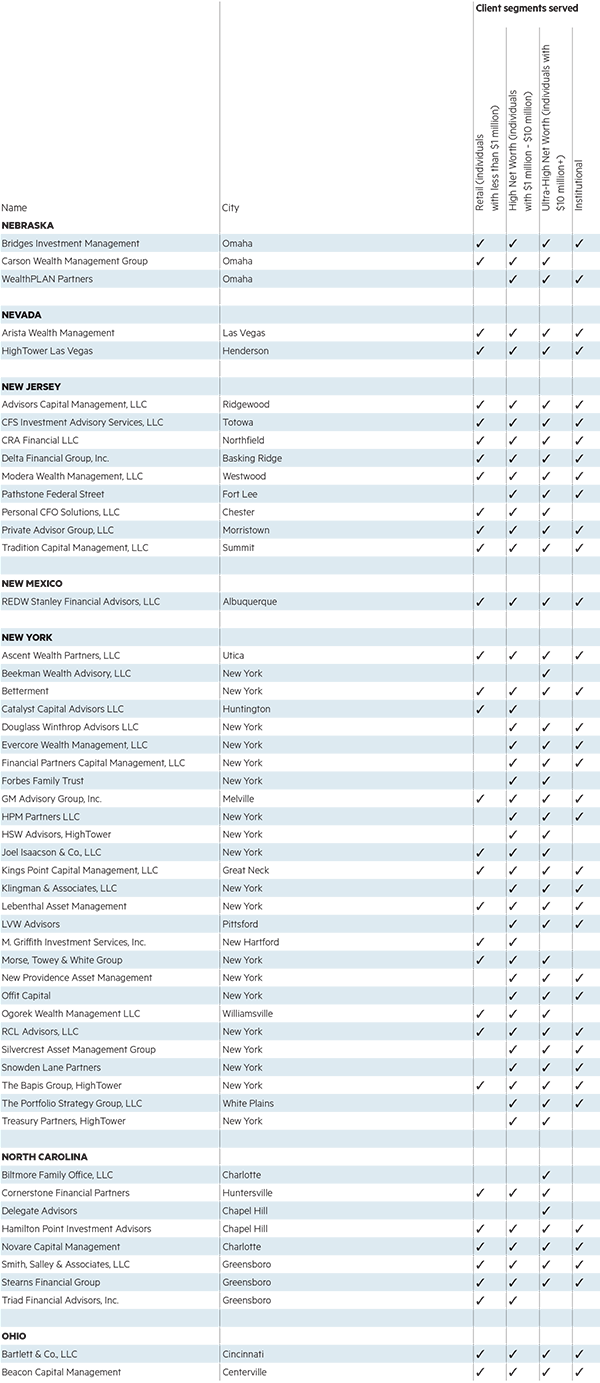
. . . . . . . . . . . . . . . . . . . . . . . . . . . . . . . . . . . . . . . . . . . . . . . .

. . . . . . . . . . . . . . . . . . . . . . . . . . . . . . . . . . . . . . . . . . . . . . . .
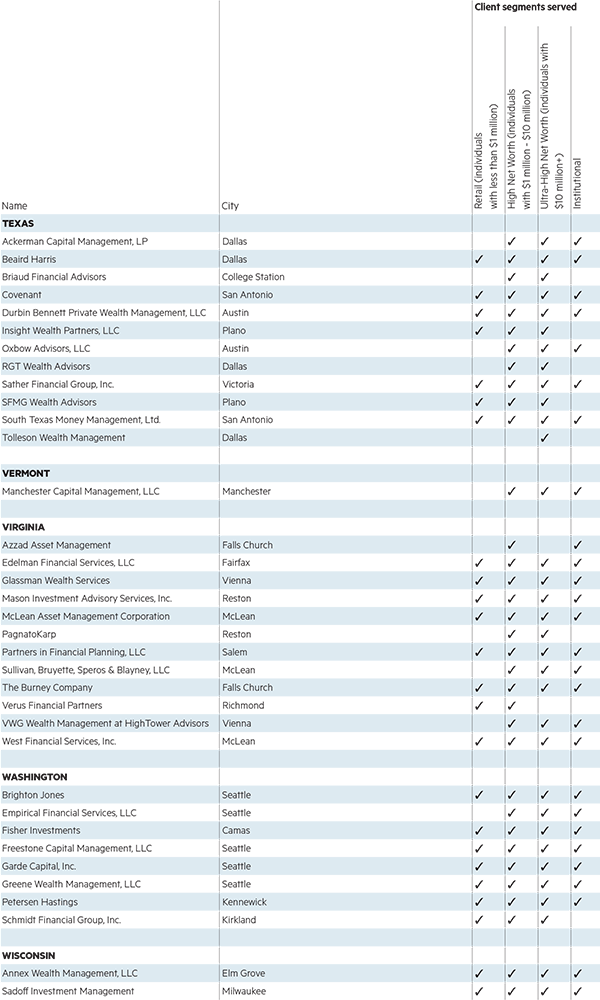
Comments